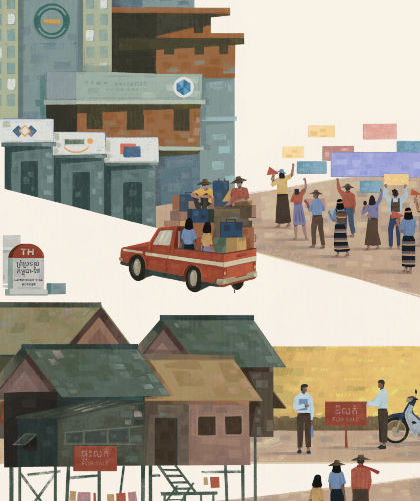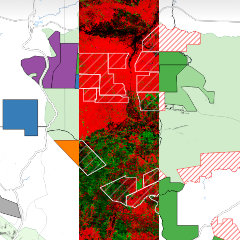Two Years After their Eviction from the Center of Phnom Penh Villagers are Still Living in Squalor
Published on 6 June 2008On June 6, 2006, more than 1000 families were violently expelled from their homes in Sambok Chap village in inner city Phnom Penh. The eviction was conducted by police and military police armed with guns, tear gas, batons and riot shields, and resulted in physical injuries, significant psychological trauma, and loss of property. The residents were forced onto trucks and taken to be dumped in an open field at Andong, 22km from central Phnom Penh - their new 'home'. There was no shelter, electricity, running water, schools, health services or readily-available employment nearby. The low-lying site was prone to flooding in the rainy season. With no choice but to live there, the evictees started to build simple houses, usually made of only tarpaulins and pieces of wood. Soon they were living in ankle-deep contaminated water.
Today 6 June 2008 marks the two year anniversary of the eviction, the site of their former homes in Sambok Chap - slated for commercial development by a private company - remains bare and unused, while the evictees continue to live in squalor at the Andong relocation site.
Water & sanitation issues
There is no source of drinkable water available to Andong residents, according to a March 2008 water and sanitation analysis done by Future Cambodia Fund NGO. All onsite wells are contaminated with bacteria and unacceptably high levels of mineral and heavy metal content. So too is the water in large UNICEF-donated water tanks at the site; villagers have to pay for the tainted water in the tanks, which is supplied by a private company. Only two communal latrines function in Andong, but are heavily soiled. Most people openly defecate and urinate in the surrounding area. There is no sewage or waste collection service. Residents throw dirty waste water, and burn or dump household rubbish, on the ground around the site.
Medical issues
Most common health problems for residents include malnutrition, typhoid, dengue fever, hepatitis A or B, hypertension, respiratory tract infections, gastro-intestinal illnesses including stress-related ulcers, depression and anger management problems. There is a high rate of miscarriage, hemorrhaging and anemia due to a lack of care for pregnant women. Unless an NGO helps them, most pregnant women give birth at the site because they cannot afford to go to hospital. Many children suffer from pneumonia, bronchitis, tuberculosis, diarrhea, dysentery, malnutrition, and skin diseases (from infected wounds or poor hygiene). Between June 2006-December 2007, Licadho's Medical Team provided 14,748 medical consultations at Andong; more than 5,000 were of children aged under 5, and more than 4,700 were of adult women.
Legal issues
No evictees at Andong have been given land titles, despite authorities' promises in 2006 that they would receive them. Only about 440 families have officially received plots of land at the relocation site (but were told they would not receive titles to them for five years) Hundreds of other families remain at the site in a complete legal void - the authorities do not recognize that they came from Sambok Chap or that they have any right to land at Andong. (Because authorities did not do any registration of evictees during the June 2006 eviction, there is no official record of how many families were expelled from Sambok Chap and relocated at Andong. Authorities have given widely varying statistics for this, and for how many people currently live at Andong.) All of the people at Andong have no clearly enforceable land rights, and could be evicted again at any time.
The Sambok Chap eviction, and the continuing treatment of the evictees at Andong, grossly violates the human rights protections for Khmer citizens contained in the country's Constitution, as well as international human rights law. This is just one case in a wider pattern of rapid, unregulated and often illegal development across Cambodia which threatens the health, welfare and economic security of countless people. It is exacerbated by a culture of corruption and impunity and, all too often, by an international donor community which turns a blind eye to such abuses.
- Topics
- Land Rights
- Related








